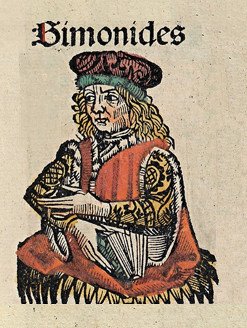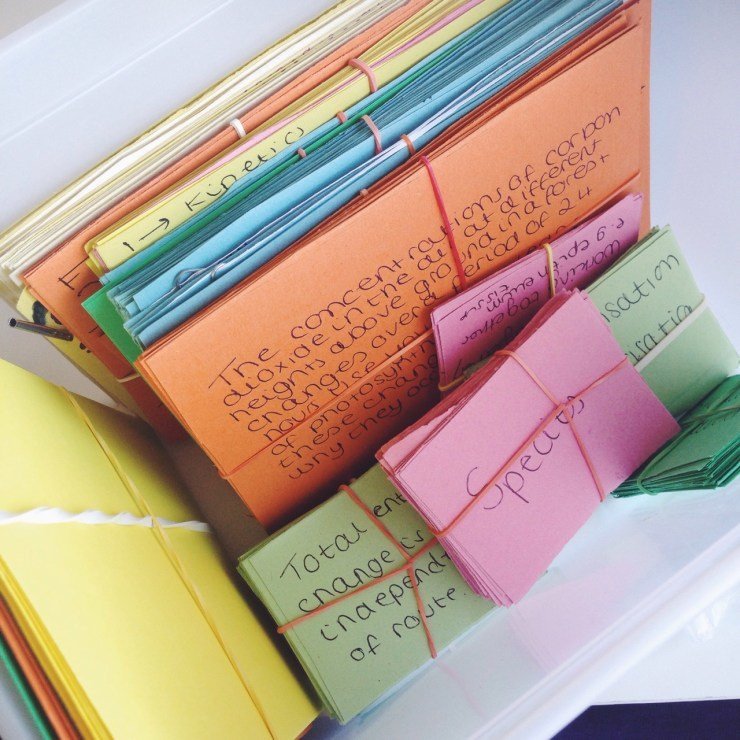Nowadays, information streams are so fast that it is extremely difficult to keep track even of current affairs, while remembering something large seems infeasible. However, the ancient Greeks came up with a way to memorize large portions of information quickly and reliably. This article describes several mnemonic techniques.
Do you remember A Horsy Name, a short story by A.P. Chekhov? Throughout the story, the main character tries to recall the last name of the gifted “tooth conjurer.” His last name has something to do with horses, but he fails to recall it, because lots of associations come to his mind – and all of them are wrong.
“It's a common name too, something to do with a horse. Is it Mayres.? No it isn't Mayres – Wait a bit, is it Colt? No, it isn't Colt. I know perfectly well it's a horsey name, but it has absolutely gone out of my head !” Ivan Evseich grumbles.
In fact, the character unwittingly used one of mnemonic techniques, but created the image incorrectly. The association is too inaccurate (the name was actually Hayes), so he got confused with the options. Using memorization techniques, one should be careful. However, if you do everything correctly, the information will remain in your memory for a long time.
Simonides
What is mnemonics?
The ability to remember is also an art. This is the conclusion we will make if we decipher the concept of “mnemonics,’ which is translated from ancient Greek as “the art of memorization.” Today, this term is perceived as a set of techniques that facilitate memorization of various volumes of information, most often with the help of analogies or associative connections.
A person connects a specific fact or a set of data with a visual, sound or sensory image that is already stored in their memory. The word “mnemonics” is often used to describe visualization of information. This technique has a clear advantage over simple rote learning: filling a word or a fact with some personal content, we fix it in our memory for a long time. It resembles an internal writing system: in our mind, we create connections between the fact and the image, placing accents important for memorization.
How did mnemonic techniques appear?
The art of memorization came to us from antiquity, when people could not write, but had to memorize a large number of texts. For example, priests and shamans had to perform long rites and remembered lots of spells, while ancient storytellers sang lengthy verses devoted to wanderings and legends. Even with the advent of writing, memorization remained an important component for people of certain occupations, since copying books took a long time and was quite expensive.
One of the first recorded references to a mnemonic practice is found in Cicero's treatise On the Orator, where the author tells readers the story of the poet Simonides and describes an accident that occurred at a feast. After the poet read his ode and left the room, the hall roof collapsed. All the guests died, and it was almost impossible to identify them. However, Simonides was able to indicate every person's place, recreating this evening in his memory. That's how he came to the idea that in order to memorize things, it is necessary to organize one's thoughts and attach them to certain images. Later, many ancient Greek works considered mnemonics as a part of rhetoric, without which it was simply impossible to master the art of words.
Quintilian
Quintilian’s method
In one of his works, the Roman rhetorician Quintilian described a method of assimilation of information, which was later called architectural mnemonic. This method is based on forming a memory of several places filled with various images.
Let us imagine a large building with various rooms. Mentally decorate them with paintings, statues, bas-reliefs – whatever your heart desires. Decorations are a storehouse of the images that will help us recall the necessary information (Quintilian mentions an anchor and a sword as examples). Then plot a route through our building, consistently recalling every detail in every room. As a result, you can reproduce everything you need without missing any important points.
The anchor will remind about the issues of navigation, while the sword will prevent you from missing a story fragment about military operations. At the end of the route, the encrypted beacons will combine into a coherent story of an experienced speaker.
Modern methods and techniques
Today, among the key mnemonic techniques are the following:
- creating a phrase from the first letters necessary for memorizing words;
- finding a rhyme;
- consonances;
- bright and unusual associations;
- memorization through space (architectural type);
- numerical patterns, and much more.
Method 1. “Arranging” the symbols
Create image associations in your mind. For example, you need to learn a long poem. Mark each stanza with a certain symbol. Arrange these symbols into a clear and unchangeable sequence. You can imagine the road from the local supermarket to your house and place the symbols you need along the way: every time you tell a poem, mentally walk along it and collect the symbols you placed there. It resembles the Quintilian's approach, but a bit modernized.
Method 2. Building a dialogue
Or, on the contrary, we can use words or poems to memorize a complex and long number. For instance, to memorize the value of pi, the well-known mathematician and teacher Yakov Isidorovich Perelman proposed the following dialogue:
— Что я знаю о кругах? (What do I know about circles?)
— Вот и знаю я число, именуемое Пи. — Молодец! (And I know the number called Pi. — Great!)
— Учи и знай в числе известном за цифрой цифру, как удачу примечать. (Learn and know how to notice good luck in a well-known number digit by digit.)
Let's decipher it! In Russian, the number of letters in each word is equal to the corresponding digit of pi.
— π ≈ 3,1416
— π ≈ 3,1415927
— π ≈ 3,14159265359
(Translator’s note: In English, the equivalent phrases are, for example, “How I wish I could recollect pi easily today!” or “May I have a large container of coffee, cream and sugar?”)
Method 3. Using initial letters
The way of remembering the rainbow colors that we clearly remember since childhood – by means of the phrase: “Richard Of York Gave Battle In Vain” (red, orange, yellow, green, blue, indigo, violet) – can be transformed into something more complex and practical. For example, students often memorize the order of adjectives in an English sentence with the help of a weird word OPSHACOM, which means: opinion, shape, age, color, origin, material. And poetic three-syllable sizes can be remembered with the help of the word DAMA, which means dactyl, amphibrachium, and anapest.
Method 4. Consonances
This is a very convenient way to learn a foreign language. If you cannot remember a foreign word, come up with a word from your native language that you can associate it with. The words may be different in meaning, but they must sound similarly.
Method 5. Memorizing faces
If you pass by a neighbor living next door and fail to recognize him, don't worry. There is a very simple way to remember faces. Look at the person and note a detail that catches your eye: deep-set eyes, a sharp nose, big lips, a beautiful hair color, or a tattoo on the shoulder. The next time you see this detail, it will immediately lead you to the right person.
For children
When working with children, various memorization practices are used. For example, there are mnemonic squares, mnemonic tracks, and mnemonic tables.
Mnemonic squares are cards with images of concepts new to the child, which illustrate them with funny, simple, and understandable pictures.
A mnemonic track is a correct sequence of squares (cards) that must be reproduced during the learning game.
A mnemonic table is a set of cards telling a long story that must be memorized.
Such cards are also convenient for adults if you want to memorize new words of a foreign language quickly and in conveniently. Write the word in the original language on one side, and its translation – on the other. Check yourself using the cards in different order and from different sides, and the information will be absorbed faster.
The article was prepared based on open sources with the help of http://www.mnemotexnika.narod.ru/ist_f.htm and https://bukva.info/blog/top_10_priemov_mnemotekhniki /
Photo: Яндекс.Дзен, ladyinlife.ru





























